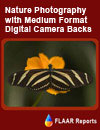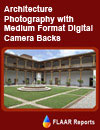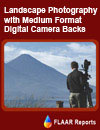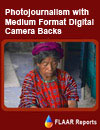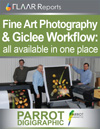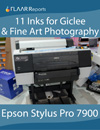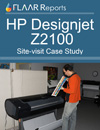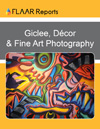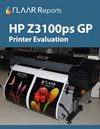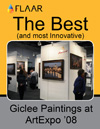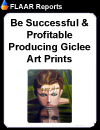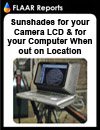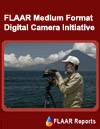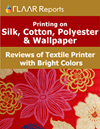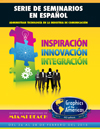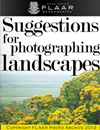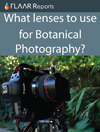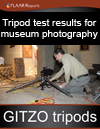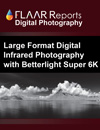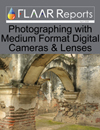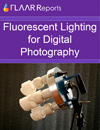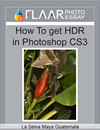With a CO/2 laser engraver you can engrave a photograph onto stone, wood, or meta.
If you want to make your photographic prints unique, ”print” them onto stone, wood, or metal. There are several ways to accomplish this. One is to use a CO/2 laser engraver. The other way is to use a UV-curable inkjet printer that is designed to handle stone, wood, metal, floor tiles, wall sections, even concrete.
 |
Trotec booth, showing printing examples at Viscom Germany 2007. |
 |
GCC engraver example, ISA 2008. |
You can also create 2-dimensional and 3-dimensional works of art with a laser engraver/cutter.
Architects can utilize a laser engraver to decorate their models. The laser cutter can cut the model out of plexiglass, wood, or cardboard. We presently use a Universal Laser Systems M-300 for this purpose. Trotec is now providing a larger and 50% more powerful laser cutter/engraver to FLAAR so we can test, evaluate, and write-up our recommendations.
We are also excited about the laser engraver technology to help museums and archaeological projects reproduce precise copies of archaeological artifacts. The Vytek F/X laser system would be ideal for this application.
 |
|
|---|---|
 |
 |
| Trotec laser engraver | Universal laser engraver |
For further information on flatbed cutters for foam material and other rigid materials
If you have questions about flatbed cutters, you ought to contact individuals who have experience both with flatbed cutters AND with UV-curable flatbed printers. After all, it's foam boards, Coroplast, Sintra, Styrene, plexiglas and many other materials you will need to understand how to cut.
One place that where we know the people personally, is Global Imaging (toll free 800 787-9801). They know about the reality of UV-curable flatbed printers, and know XY cutters.
They also know image capture (medium format digital cameras, as an example). In other words, they are at a professional level. This is not a low-bid box pusher where they don't know the difference between UV and solvent ink.
If you are accustomed to priority treatment relative to UV printers, and have a printshop that needs to learn at a high level, might as well start at the top (the CEO of Global Imaging): Greg Lamb, glamb@globalimaginginc.com.
 |
 |
 |
| Vytek laser engravers: On the first picture we looked the Vytek GX Series and the second we looked the Vytek Special F/X Laser system. Both are at SGIA 2006. |
Most recently updated Oct 9, 2006.
First posted May 1, 2006.
|
Nicholas Hellmuth’s Medium Format Digital Camera InitiativeFor over 40 years Nicholas Hellmuth has used Rolleiflex and Hasselblad cameras to record the flora, fauna, and archaeology of Belize, Guatemala, Honduras, and Mexico. Now for several years he is extending his medium format experience to digital photography. Since FLAAR works both in a studio as well as out on location, we are an ideal focus for judging portability. We have experience with large format digital scan backs (the excellent BetterLight) and we also use Nikon and Canon digital cameras. A full-service digital pro should have at least one medium format digital system and should consider large format digital options as well. Although we started with a Leaf Valeo 22 coupled with a Mamiya 645 AFD body and lenses, we are open to showcasing all bodies as well as other digital backs. Indeed we have tested an Imacon 4-shot back on a Hasselblad H1 body. Then (February 2006 onwards) we are evaluated a MegaVision black-and-white dedicated back for fine art photography. Next we are testing a 33-megapixel Phase One P 30. Since 2008 FLAAR has used a Phase One P25+ (a great way to update an aging Hasselblad ELX body with its excellent Zeiss lenses). Camera resellers or manufacturers who wish to have their cameras, lenses, and backs included in this initiative are welcome to send their equipment for evaluation. FLAAR is the de facto source of information because we have been university based, independent, blunt, and we are one of the few review sources that dares to review advertising specs, advertising claims, and advertising hype. We can afford to reveal all the pros and cons because FLAAR is a research institute. Photographers feel they can trust a university research professor who has devoted years to understanding the pros and cons of each aspect of a digital camera system and workflow. Notice you are not blinded by blinking, flashing, or pesty ads for low-bid camera stores on a FLAAR photography review. I am always amused by a pseudo-review that obviously is simply paid to send you to a camera store. You can download our colorful FLAAR Reports on our medium format digital camera initiative. |
|||||||||||
Free Reports (Inquiry Form)
Additional links of our FLAAR sites |
| Rigid Printable Materials |
| Printing on Glass |
| Sandwich board for recyclable furniture! |
| Metallic Effects |
Free Download Reports
| Home | About Us | Consulting | About FLAAR Reports | Site Map | Privacy Statement | back to top | |||||
|
|||||||||||
www.digital-photography.org is part of the FLAAR network © 2001-2021. If you notice a bad link, missing photos, misspellings, please report to the webmaster: |
|||||||||||

